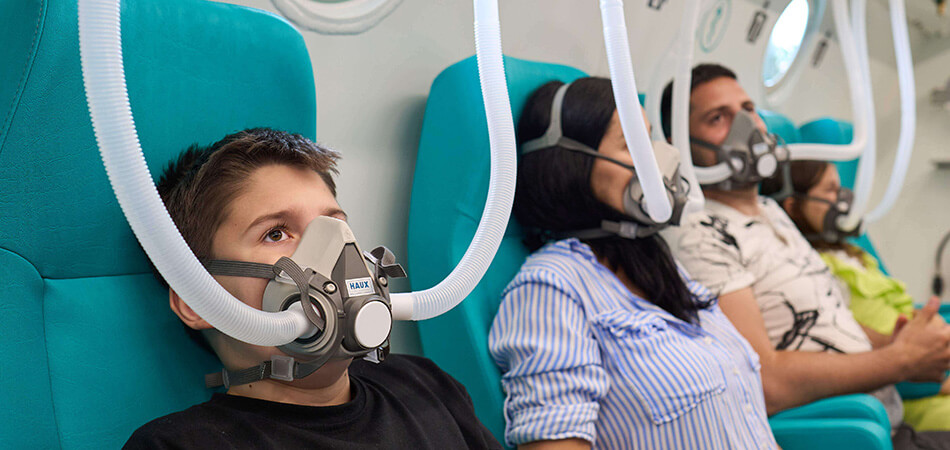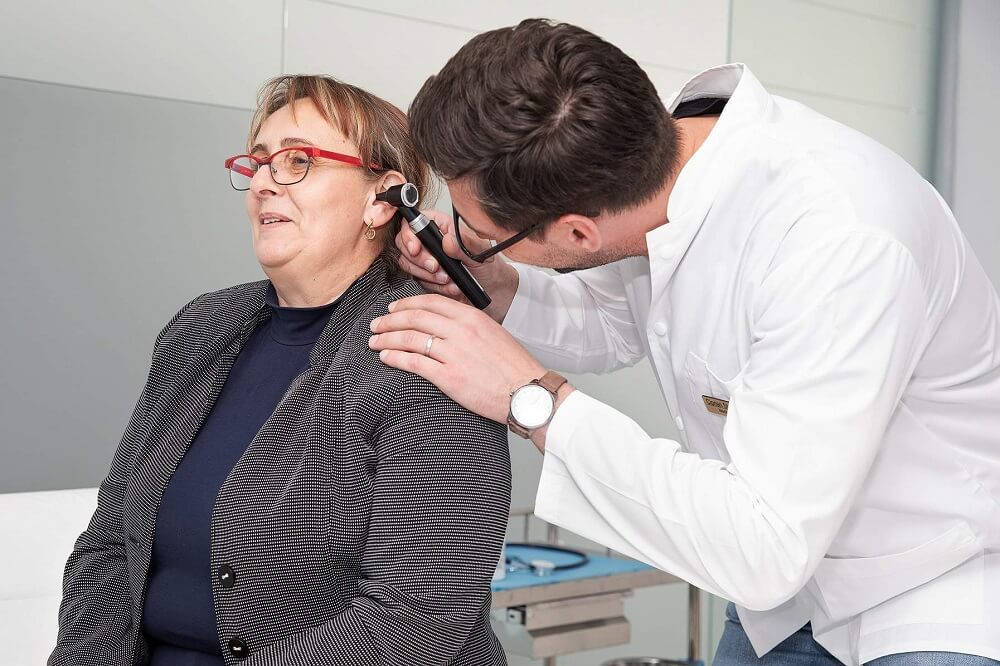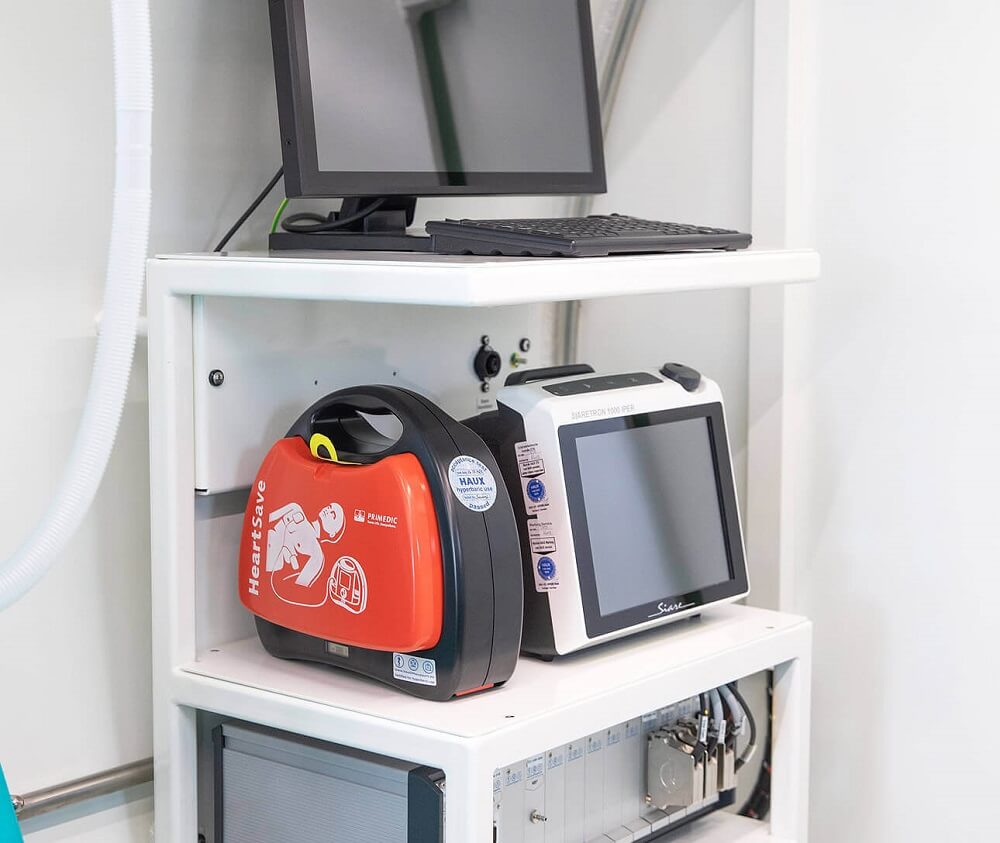
Article reviewed by: Dr. Sturz Ciprian, Dr. Tîlvescu Cătălin and Dr. Alina Vasile
How Safe Is Hyperbaric Therapy? Risks and Contraindications.
Hyperbaric therapy is a medical treatment that involves breathing pure oxygen, usually in a chamber with one or more seats. The chamber can be pressurized directly with medical oxygen or with purified air, in which case the oxygen is administered by mask. Normally, the air we breathe contains about 21% oxygen. In hyperbaric therapy, the oxygen concentration administered is much higher, close to 100%.
The main purpose of this therapy is to increase the amount of oxygen in the blood, which can help speed up the healing process of certain conditions or injuries. This method is often used to treat conditions such as severe infections, air bubbles in blood vessels, chronic wounds from diabetes or radiation, severe burns, carbon monoxide poisoning, certain types of skin or bone infections. Hyperbaric therapy is also used as an adjunctive treatment for dozens of other conditions, with new recommendations being periodically added by the European Committee for Hyperbaric Medicine (ECHM).
Hyperbaric therapy is recognized as a safe and reliable medical treatment with a low risk of complications. This means that for most people, undergoing hyperbaric therapy does not involve health risks and has no adverse effects.
A study published in 2000 examined the complications and side effects of hyperbaric therapy (HBOT). This study involved 782 patients, treated for various conditions, in more than 11,000 hyperbaric therapy sessions. The conclusion of the study is:
Patients scheduled for hyperbaric therapy require careful preliminary examination and monitoring. If safety guidelines are strictly followed, HBO therapy is a method with an acceptable level of complications. The predominant complication is pressure equalization problems in the middle ear. Serious complications rarely occur.
The study found that the most common complication encountered in hyperbaric therapy was the increased need for pressure equalization in the ears. This is a common reaction to changes in ambient pressure, and although it can be uncomfortable, it is not usually considered a serious complication.
What are the risks and contraindications
The most common side effect of hyperbaric therapy is barotrauma, a condition that manifests as discomfort or pain in the ear. This occurs when there is a difference in pressure on either side of the eardrum, similar to the sensation experienced during takeoff. Other contraindications for hyperbaric therapy include:
- Pneumothorax: The presence of air or gas in the pleural cavity, which can be aggravated by the increased pressure in the hyperbaric chamber.
- Some lung conditions: Severe lung disease, such as emphysema with large bubbles, can increase the risk of lung collapse under pressure.
- Pheochromocytoma: A tumor of the adrenal gland that can secrete hormones uncontrollably under pressure.
- Drug treatments: A few drugs, such as doxorubicin (a chemotherapy agent) and cisplatin, can have adverse interactions with high-pressure oxygen.
- History of seizures: Patients with a history of seizures, especially uncontrolled seizures, may be at increased risk of seizures during hyperbaric therapy.
- Pregnancy: Although not an absolute contraindication, the use of hyperbaric therapy during pregnancy requires caution and should be carefully evaluated.
- Severe claustrophobia: Because the therapy requires staying in a closed room, people with severe claustrophobia may have some difficulties.
- Middle ear implants: Certain types of middle ear implants may be affected by the pressure in the hyperbaric chamber.
What are the possible side effects of hyperbaric therapy?
With HBOT therapy, side effects are generally mild and related to the significant pressure changes within the chamber as well as the increased levels of oxygen used. In most cases, hyperbaric oxygen therapy is well tolerated, non-invasive and produces very few side effects. Among them are:
Ear barotrauma
The main side effect reported in hyperbaric medicine is ear discomfort or injury due to increased air pressure. In most cases, this is similar to the pain or discomfort you might experience on a trip through the mountains or the pressure felt when flying on an airplane. Patients with ear sensitivity may require ear tubes prior to HBOT treatments.

Oxygen toxicity
Clinical HBOT treatments work well within safe limits of oxygen levels, and the risk of oxygen toxicity is rare. In extreme cases of oxygen toxicity, convulsions may occur. This is more likely to occur in patients with pre-existing seizure disorders or hypoglycaemia. If this happens, the oxygen is stopped and the seizures will stop.
Slight vision changes
Changes in air pressure that occur during HBOT treatments can cause visual changes. These changes are temporary and usually return to normal once the therapy ends. These changes can include changes in the shape of the lens of the eye, resulting in worsening myopia or nearsightedness, but at the same time improving focus on objects close to the eye.
Hypoglycemia
Diabetic patients may experience a drop in blood sugar levels during HBOT treatments. In these cases, depending on your personal medical condition, our doctors may encourage you to eat before coming for treatments and may require regular monitoring of your blood sugar levels during treatments.
Sinus compression or toothache
Because the sinus cavity is made up of air-filled spaces, you may experience pressure changes and discomfort similar to that seen in the ear. In addition, recent dental work can leave small air gaps that can also be affected by pressure changes. This pressure can lead to discomfort and if the dental work has not been performed properly and there is a larger air gap, the pressure can even lead to the crack of the respective tooth.
What is important to know for patient safety?
As studies, including the one mentioned above, show us, hyperbaric therapy poses very small risks, but this is only true if it is practiced in professional medical conditions, where safety guidelines are strictly followed and where a preliminary examination is carried out careful and careful monitoring.
It is important that anyone considering hyperbaric therapy speak with a medical professional to assess the risks and benefits in the context of their condition and individual medical history. The team of specialist doctors at the Hyperbarium clinic is at your disposal for consultation and assessment. Schedule a consultation to discuss the possibilities and benefits of hyperbaric therapy tailored to your needs.
Anyone considering hyperbaric therapy and interested in the risks and side effects should understand the difference between the two types of hyperbaric chambers: mHBOT (mild hyperbaric therapy) and HBOT (medical hyperbaric therapy), as they have implications large vis-à-vis patient safety. Read this article to better understand the differences between the chambers and the advantages and disadvantages of each.
MHBOT hyperbaric chambers are much cheaper to manufacture than HBOT medical hyperbaric chambers, with production costs that can be up to 30 times lower. For this reason, mHBOT cameras are becoming more and more present in places such as beauty salons or spa centers. Unlike medical HBOT cameras, mHBOT cameras do not require medical clearances or the presence of qualified medical personnel to operate. They are also not considered medical devices and therefore cannot be used to administer medical treatments.
On the other hand, HBOT cameras, used for medical purposes, require strict regulations in Romania. They must be accredited by the National Medicines and Medical Devices Agency and authorized by the Ministry of Health and Local Health Authorities. In addition, the presence of qualified medical personnel and periodically certified operators is mandatory for their operation. This means that unlike mHBOT cameras, HBOT cameras are used in a controlled and strictly regulated medical environment.
Even though in Europe it is prohibited to promote mHBOT chambers as suitable for medical treatments, unfortunately, it often happens that the promotional materials of these chambers describe the procedures and principles of medical HBOT therapy. This can mislead both patients and sometimes doctors as to the actual technical performance of the respective hyperbaric chambers. Consequently, this can lead to significant delays in the application of appropriate medical treatment, which can be crucial at certain points in the course of a disease.
The confusion is also compounded by the fact that some medical clinics choose to purchase these mHBOT devices, which are not intended for medical use, for reasons of cost, as they are considerably cheaper than medical HBOT cameras. This contributes to the perpetuation of misunderstanding about the effectiveness and proper use of these types of hyperbaric chambers.
Information provided by the FDA and numerous studies show that when applied properly, in accredited medical centers, hyperbaric therapy can be considered one of the safest medical treatments available.
To safely benefit from the studied effects of hyperbaric oxygen therapy, it is important to ensure at least three things:
- The hyperbaric chamber is medically accredited and operated by certified personnel according to the rules in force.
- The pressure in the chamber can reach 3 ATA. (ATA pressure is composed of the value of the atmospheric pressure 1 bar + the value of the additional pressure in the hyperbaric chamber)
- Oxygen inspired during therapy must have a purity greater than 99.5%.
Fire risk and medical intervention in HBOT rooms
Inside the HBOT chamber, due to the increased quantity and inflammability of oxygen, access with electronic or heat-emitting devices is not allowed. Safety rules are strictly followed to prevent any injury to the patient and the medical staff.
According to European and international standards, multi-place HBOT rooms must have a pneumatically activated fire-fighting system, but also an access hatch for patients or for emergency access by medical personnel.
The hyperbaric chamber of the Hyperbarium clinic is also equipped with a bed fully equipped with ATI, for treatment in the hyperbaric environment. The ATI system contains an AED defibrillator, a secretion aspirator, an ATI multi-parameter ventilator, a mechanical ventilator and an ATI injector.

For other questions or concerns schedule a consultation!
It is important that anyone considering hyperbaric therapy speak with a medical professional to assess the risks and benefits in the context of their condition and individual medical history. The team of specialist doctors at the Hyperbarium clinic is at your disposal for consultation and assessment. Schedule a consultation to discuss the possibilities and benefits of hyperbaric therapy tailored to your needs. The Hyperbarium Clinic is one of the most advanced and modern hyperbaric medicine centers in Romania. Located next to Băile Felix, it offers patients a variety of recovery therapies for a wide range of acute and chronic conditions.




